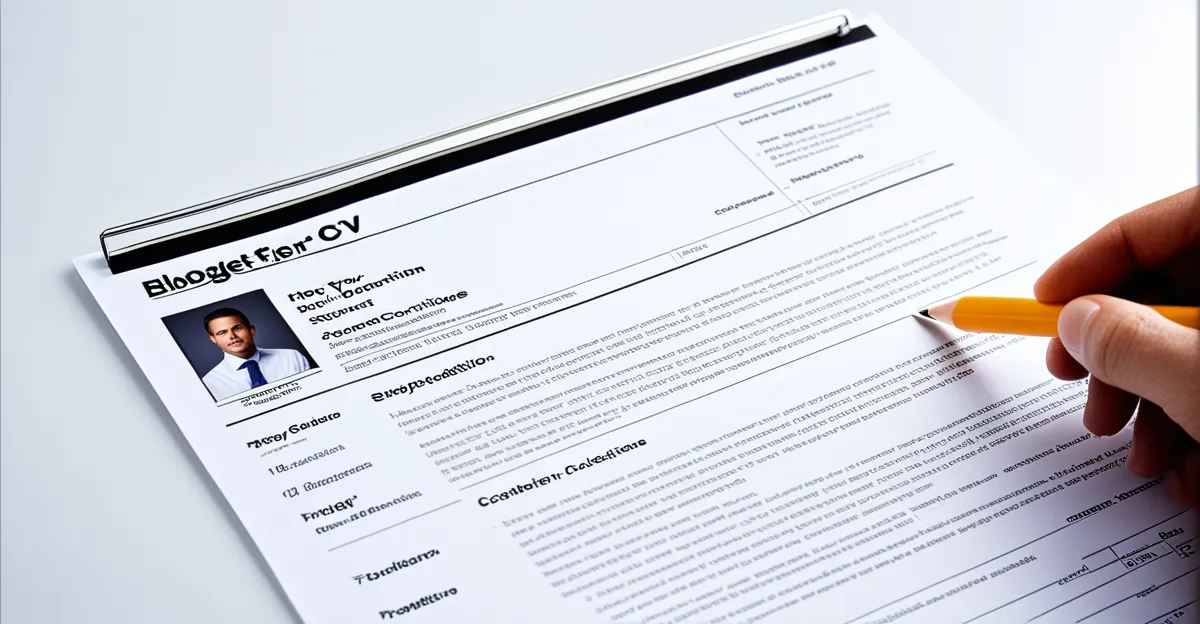Removing personal details from your CV can unlock fairer job opportunities by eliminating unconscious bias. Anonymizing goes beyond deleting names—it requires careful redaction of age, gender, and other identifiers that skew recruiter judgment. Automatic tools now simplify this process, saving time while helping your skills and experience stand out on their own merit.
Fulfilling the Need for Anonymous CVs in Modern Recruitment
One of the most impactful steps toward avoiding bias in recruitment process is CV anonymization, where all personal identifiers are systematically removed so candidates are judged only on skills and achievements. This page details the process: https://hiringnotes.com/recruiter/convert-anonymous-cv.
Additional reading : What Are the Latest Trends Shaping the Future of Business Services in the UK?
Removing names, dates of birth, addresses, gender, or education history from a resume sets the foundation for blind recruitment strategies. This practice not only helps meet compliance with anti-discrimination regulations but also corrects well-documented disparities that persist in hiring—for instance, the challenge faced by ethnic minority candidates needing to send at least 8% more applications to receive responses equal to their peers. By screening anonymous resumes, organizations help flatten the playing field and promote diversity and inclusion in hiring.
Practical tools for anonymizing resumes, such as AI-driven services, help recruiters cut processing time dramatically while ensuring unconscious bias in candidate screening is minimized. The result? Better overall hiring outcomes, a measurable increase in positive responses for underrepresented groups, and more focus on applicants’ true competence—supported by a clear uptick in workplace diversity.
This might interest you : 10 strategies to mask your CV for enhanced job prospects
Step-by-Step Guide to Effectively Anonymising a CV
Identifying and Removing Personal Information: Names, Photos, Gender, Age, and More
Apply the SQuAD method: Start by isolating every personal identifier—name, photo, gender, date of birth, specific contact data, and details hinting at nationality or ethnicity. Remove any clues that might signal religion, family status, or memberships. For contact information, retain only a neutral email or phone number, strictly for communication after assessment. Eliminate images, personal pronouns, and addresses completely, as these consistently trigger bias.
Techniques for Anonymising Education, Work History, and Achievements Without Losing Impact
Omit school and employer names. Replace them with general role titles and subject areas, focusing on skill descriptions and achievements. Use phrases like “Degree in Mechanical Engineering—distinction” rather than specifying locations or graduation dates. Summarize work experience using functional descriptions and timeframes (e.g., “Recent project manager role” instead of “Acme Ltd, 2018–2022”). This reduces indirect bias while maintaining the relevance and context of qualifications.
Formatting Guidelines and Use of Templates to Ensure Readability and Consistency
Adopt a clean, uniform design throughout the document. Use clear headings, straightforward fonts, and logical spacing. Integrate bullet points to highlight core competencies and measurable results, keeping each description focused. Ensure anonymised CV templates are accessible to screen readers and are simple to scan—this supports unbiased, efficient review by recruiters at scale.
Tools, Best Practices, and Real-World Insights in Anonymous Recruitment
Automated Solutions and Software for Anonymising CVs and Their Integration with Recruitment Platforms
Precision and recall, in SQuAD terms, define the rigor of anonymization. Precision means only essential identifiers—like names, photos, and affiliations—are eliminated, ensuring vital job-relevant content is retained. Recall reflects thoroughness: all non-essential, bias-triggering data must be omitted.
Cutting-edge automated CV anonymisation tools seamlessly integrate with modern recruitment platforms, drastically decreasing manual effort. For example, solutions utilize AI to consistently scan and redact sensitive information, preserving CV structure for unbiased evaluation. Some platforms support bulk processing, multilingual formats, and customizable anonymisation levels, which is especially useful for large organisations or government hiring. They dramatically reduce screening time, allowing recruiters to focus on shortlist quality.
Best Practices for Recruiters and Candidates: From Workflow to Legal Considerations
Robust workflow integration is essential: implement step-by-step checks to confirm no personal detail remains. Teams should maintain an anonymised CV review checklist, targeting age, gender, ethnicity, address, affiliations, and subtle proxies. Legal compliance with privacy regulations, such as GDPR or EEOC, further protects candidates and organizations.
For candidates, emphasizing quantifiable skills, achievements, and relevant results helps neutralize the loss of personal branding, supporting fair comparisons.
Analysis of Case Studies, Examples, and Key Findings on the Impact and Challenges of CV Anonymisation
Case studies reveal anonymised recruitment leads to higher invite rates for diverse candidates, fewer rejections due to bias, and improved workforce inclusion. Challenges persist, like technical gaps in off-the-shelf tools or resistance to changing traditional workflows.
While manual anonymization remains laborious and error-prone, automated systems continue to advance, making unbiased, skill-centric hiring more realistic and scalable.







